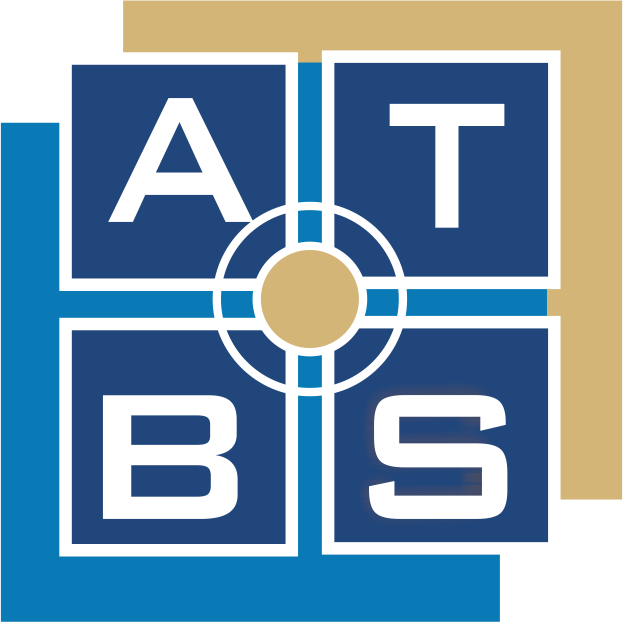Unfortunately, every business is susceptible to financial fraud. The average business loses about 5% of its profits to fraudulent practices each year. Even worse, much of it could have been prevented with the right methods in place, explains Accurate Tax & Bookkeeping Services, a respected Accountant in Brandon, FL.
What is Business Financial Fraud?
Business financial fraud refers to any intentional and deceptive act committed by individuals within or outside a company to manipulate financial records, misappropriate funds, or obtain unauthorized benefits for personal gain. This form of fraud encompasses a wide range of illicit activities, including embezzlement, falsifying financial statements, kickbacks, billing schemes, and identity theft.
The Importance of Protecting Your Business from Fraud
Protecting your business from financial fraud is vital to ensure its long-term success, stability, and reputation. Falling victim to fraudulent practices can lead to severe consequences, including financial loss, damage to the company’s image, legal repercussions, and even the risk of bankruptcy. In addition, businesses that experience fraud often face challenges in rebuilding trust with stakeholders such as investors, customers, and business partners.
Preventing financial fraud requires a proactive and comprehensive approach that involves implementing robust internal controls, maintaining strict cybersecurity measures, fostering a culture of ethics and accountability, and staying vigilant against emerging fraud tactics. By investing time, effort, and resources in fraud prevention strategies, businesses can significantly reduce their vulnerability to fraudulent activities and safeguard their financial health.
Understanding Common Types of Business Financial Fraud
One of the first steps in preventing fraud is understanding it. Here are some of the top types of fraud.
Employee Theft and Embezzlement
Employee theft and embezzlement are among the most prevalent forms of business financial fraud. These activities occur when employees misuse their access to company funds or assets for personal gain. Examples of employee theft and embezzlement include:
a. Skimming: This involves employees diverting cash or revenue before it is recorded in the company’s books. Warning signs may include discrepancies between reported and actual sales, unexplained cash shortages, or irregularities in customer payments.
b. Misappropriation of assets: Employees may steal physical assets, such as inventory or equipment, and sell them for personal profit. Signs of misappropriation include missing or unaccounted-for assets, frequent inventory discrepancies, or suspiciously low inventory levels.
c. Check tampering: Employees may alter or forge company checks, diverting funds into their personal accounts. Warning signs can include unauthorized signatures, altered payee names, or unexpected changes in check signatories.
d. Fraudulent expense reimbursement: Employees may submit false or inflated expense reports, claiming reimbursement for expenses that were never incurred or were personal in nature. Indicators may include excessive or repetitive expense claims, lack of supporting documentation, or suspicious invoices from vendors.

Implementing Internal Controls To Prevent Theft
Implementing robust internal controls is crucial in preventing employee theft and embezzlement. Here are some measures you can take:
a. Segregation of duties: Divide financial responsibilities among employees to ensure checks and balances. For example, separate roles for receiving cash, recording transactions, and reconciling accounts can reduce the risk of theft going unnoticed.
b. Regular monitoring and audits: Conduct periodic reviews of financial records, including bank reconciliations, cash flow statements, and inventory reports. Additionally, perform surprise audits or engage external auditors to identify potential irregularities.
c. Mandatory vacations and rotation of duties: Enforce mandatory vacations for employees in key financial roles, as prolonged absence may reveal hidden fraud schemes. Additionally, periodically rotate employees across different roles to discourage collusion and increase accountability.
d. Restricted access and password controls: Limit access to financial systems and sensitive information based on job roles and responsibilities. Enforce strong password policies and regularly change access credentials to prevent unauthorized access.
e. Anonymous reporting mechanisms: Establish a confidential reporting channel, such as a whistleblower hotline or anonymous email, to encourage employees to report suspicions of fraud without fear of reprisal. Ensure that these reports are taken seriously and promptly investigated.
f. Employee training and awareness: Educate employees about the risks and consequences of fraud, emphasizing the importance of ethical behavior and integrity. Provide training on identifying red flags, such as sudden changes in employee behavior, unexplained wealth, or conflicts of interest.
g. Background checks and hiring practices: Conduct thorough background checks and verification processes when hiring new employees, particularly for positions involving financial responsibilities. This can help identify potential risks and deter individuals with a history of fraudulent behavior.
Verification Procedures for Invoices and Payments
Invoices and payments are critical aspects of financial transactions within a business. Unfortunately, they are also vulnerable to fraud schemes that can result in substantial financial losses. Implementing robust verification procedures is essential to mitigate the risk of fraudulent activities.
Verification Procedures for Invoices
Implementing robust verification procedures for invoices and payments is essential to mitigate the risk of financial fraud. By matching invoices with purchase orders, validating vendor information, authenticating supporting documentation, implementing multi-level approval processes, and utilizing electronic invoicing systems, businesses can ensure accuracy and legitimacy in financial transactions. Similarly, implementing two-factor authentication, reviewing payment details, using dual control for fund transfers, and conducting periodic vendor reconciliations contribute to secure and reliable payment processes.
These verification procedures help identify discrepancies, detect forged or altered documents, prevent unauthorized payments, and maintain transparency in financial transactions. By implementing these measures, businesses can significantly reduce the risk of falling victim to invoice and payment fraud, thereby safeguarding their financial resources and reputation.
Regularly reconciling vendor accounts helps ensure that payments align with outstanding invoices and agreed-upon terms. Any discrepancies should be promptly investigated and resolved to maintain the integrity of financial records.
By prioritizing robust verification procedures, businesses can enhance their financial security and protect themselves from potential financial losses and reputational damage caused by fraudulent activities. It is crucial to regularly review and update these procedures to adapt to changing fraud tactics and maintain strong internal controls.
Payroll Fraud
Payroll fraud involves employees manipulating the payroll process to receive unauthorized compensation or benefits. Common payroll fraud schemes include:
- Creating ghost employees.
- Engaging in time theft.
- Manipulating commissions or bonuses.
- Making unauthorized deductions.
To prevent and detect payroll fraud, businesses should implement effective internal controls.
These controls include segregating duties among multiple employees, conducting regular audits and reconciliations of payroll records, verifying employee information and promptly removing terminated employees from the system, restricting access to payroll data, implementing reliable timekeeping and approval processes, engaging independent payroll reviews, and establishing a whistleblower hotline for reporting suspicions or concerns.
By implementing these internal controls, businesses can minimize the risk of payroll fraud, ensuring employees are compensated accurately, and company resources are safeguarded. Regularly evaluating and updating these controls is critical to adapt to evolving fraud tactics and maintaining strong prevention measures.
Effective internal controls, coupled with vigilance, proper oversight, and a well-designed payroll system, contribute to maintaining the accuracy and integrity of payroll processes. By prioritizing strong internal controls and staying proactive, businesses can significantly reduce the risk of financial losses from invoice and payment fraud and payroll fraud.
Implementing Internal Controls
Implementing effective internal controls is crucial for organizations to safeguard their assets, mitigate risks, and maintain the integrity of their financial processes.
Here are key strategies for implementing internal controls:
Segregation of Duties:
- Assigning different responsibilities to multiple employees: Segregation of duties is a fundamental principle that involves dividing critical tasks among employees. By assigning distinct roles, businesses establish checks and balances, reducing the risk of fraud and errors.
- Dual control and oversight mechanisms: In addition to segregating duties, implementing dual control and oversight mechanisms further strengthens internal controls. These practices include two-person approval for critical transactions and cross-functional reviews to promote transparency and identify potential irregularities.
Regular Monitoring and Audits:
- Conducting periodic financial reviews: Regular monitoring and reviews of financial activities help identify discrepancies, errors, or potential fraud. These reviews should encompass key processes, such as financial reporting, cash handling, and expense management, to ensure compliance with established policies and procedures.
- Engaging external auditors or consultants: External auditors or consultants can provide an independent and objective assessment of internal controls. Their expertise and experience help identify weaknesses, recommend improvements, and ensure compliance with applicable regulations and best practices.
Whistleblower Policies and Anonymous Reporting Mechanisms:
- Encouraging a culture of transparency and reporting: Organizations should establish clear whistleblower policies that promote a culture of transparency and encourage employees to report any suspected misconduct or fraudulent activities. Employees should be aware of the reporting channels and the protection provided to whistleblowers.
- Protecting whistleblowers from retaliation: It is crucial to provide safeguards for whistleblowers to protect them from retaliation. This can include anonymous reporting mechanisms, confidentiality, and legal protections. By fostering an environment where employees feel safe to report concerns, organizations can uncover and address internal control weaknesses and fraudulent activities more effectively.
By implementing these internal control strategies, organizations can enhance their financial governance, reduce the risk of fraud, and safeguard their assets and reputation. Regular monitoring, audits, and a culture of transparency contribute to maintaining strong internal controls that are adaptive to changing business environments and emerging risks.
Enhancing Cybersecurity Measures
In today’s digital landscape, enhancing cybersecurity measures is essential to protect sensitive financial information and mitigate the risk of data breaches or unauthorized access. Here are key strategies for enhancing cybersecurity.
Protecting Sensitive Financial Information:
- Encryption and secure storage practices: Employ strong encryption methods to safeguard sensitive financial data both during transmission and while at rest. Implement secure storage practices, such as secure servers or encrypted databases, to ensure the confidentiality and integrity of the information.
- Password management and access controls: Enforce strict password policies, including complex and unique passwords for each user. Implement multi-factor authentication (MFA) to add an extra layer of security. Regularly review and update user access controls to ensure that employees have appropriate access privileges based on their roles and responsibilities.
Employee Awareness and Training:
- Recognizing phishing attempts and social engineering: Educate employees about the risks associated with phishing emails, fraudulent websites, and social engineering tactics. Teach them to identify suspicious signs, such as unfamiliar senders, requests for personal information, or urgent and alarming messages.
- Regular cybersecurity training sessions: Conduct periodic cybersecurity training sessions to keep employees informed about the latest threats, best practices for data protection, and how to respond to security incidents. Reinforce the importance of maintaining vigilance and reporting any potential security concerns promptly.
Regular System Updates and Patches
- Importance of staying up-to-date with security patches: Regularly update and patch operating systems, software, and applications to address known vulnerabilities. Promptly apply security patches and updates to protect against emerging threats and prevent exploitation of system weaknesses.
- Engaging IT professionals for system maintenance: Work closely with IT professionals or cybersecurity experts to assess the organization’s security posture, identify vulnerabilities, and implement appropriate measures. Collaborate with them to establish a system maintenance schedule and ensure proactive monitoring and management of security-related issues.
By implementing these cybersecurity measures, organizations can enhance their resilience against cyber threats, protect sensitive financial information, and maintain the trust of customers and stakeholders. Ongoing employee training, robust technical safeguards, and regular system updates contribute to a proactive and comprehensive cybersecurity strategy. It is crucial to regularly assess and update these measures to align with evolving threats and advancements in cyber attack techniques.
Building Strong Relationships with Vendors and Partners
Another important aspect of preventing fraud is building strong relationships with vendors and partners, which is crucial for any business’s smooth operation and success. Here are key strategies to foster strong relationships.
Use Due Diligence in Selecting Vendors:
- Conducting background checks and verifying credentials: Before engaging with a vendor, perform thorough background checks to ensure their credibility and reputation. Verify their credentials, including licenses, certifications, and references, to assess their suitability for your business needs.
- Reviewing vendor contracts and terms: Carefully review vendor contracts to understand the terms and conditions, including pricing, deliverables, warranties, and dispute resolution mechanisms. Seek legal advice if necessary to ensure the contract protects your interests.
Monitoring Vendor Activities and Invoices
- Reviewing vendor performance and discrepancies: Regularly assess vendor performance against agreed-upon metrics, such as quality, timeliness, and customer service. Address any performance issues promptly and proactively communicate your expectations.
- Cross-referencing vendor invoices with purchase orders: Compare vendor invoices with corresponding purchase orders and delivery receipts to ensure accuracy and identify any discrepancies. Promptly resolve any billing errors or discrepancies with the vendor.
Clear Communication and Contract Management
- Documenting agreements and expectations: Clearly document agreements, expectations, and scope of work in written contracts or service-level agreements. This helps avoid misunderstandings and provides a reference point for both parties.
- Maintaining open lines of communication: Foster open and transparent communication channels with vendors. Regularly communicate updates, changes, and feedback to ensure alignment and promptly address concerns.
By implementing these strategies, businesses can establish strong and mutually beneficial relationships with vendors and partners. Due diligence in vendor selection, ongoing monitoring of performance and invoices, and clear communication and contract management contribute to a productive and collaborative working environment. Building strong relationships fosters trust, enhances collaboration, and ultimately supports the success of the business.
Implement Fraud Detection and Reporting Mechanisms
Implementing effective fraud detection and reporting mechanisms is crucial for safeguarding businesses against fraudulent activities. Here are key strategies to detect and report fraud.
Use Technology for Fraud Detection
- Implementing fraud detection software: Utilize advanced fraud detection software that can analyze transactions, identify anomalies, and flag suspicious activities in real-time.
- Analyzing data and identifying patterns: Leverage data analytics tools to analyze large volumes of data and identify patterns or trends that may indicate fraudulent behavior.
Encourage Employees to Report Suspicions
- Establishing anonymous reporting channels: Create secure and confidential reporting channels where employees can report suspicions or concerns about potential fraud without fear of reprisal.
- Providing protection for whistleblowers: Implement policies and procedures to protect whistleblowers from retaliation, ensuring they feel safe and supported when reporting fraudulent activities.
Businesses can proactively identify and address fraudulent activities by implementing technology-driven fraud detection systems and establishing a culture that encourages employees to report suspicions. These measures enhance the overall integrity of the organization and mitigate the financial and reputational risks associated with fraud.
Conduct Risk Assessments
Regular risk assessments and compliance checks play a crucial role in helping businesses identify vulnerabilities, evaluate potential fraud risks, and ensure adherence to regulations and standards. To implement these practices effectively, businesses should focus on the following steps.
Identify Vulnerabilities and Potential Fraud Risks
- Conduct periodic risk assessments to evaluate the organization’s processes, systems, and controls to identify weaknesses and vulnerabilities that fraudsters could exploit.
- Stay vigilant and assess the impact of changes in business processes and technology to proactively identify associated risks and implement preventive measures.
Ensure Compliance with Regulations and Standards
- Stay updated on relevant laws, regulations, and industry standards that govern your business activities to remain informed about compliance requirements.
- Conduct regular compliance audits to verify adherence to regulations and standards. This enables timely corrective actions for any identified non-compliance issues.
By regularly conducting risk assessments and compliance checks, businesses can proactively identify and address vulnerabilities, mitigate fraud risks, and demonstrate a commitment to compliance and integrity. This approach strengthens the overall risk management framework and fosters a culture of compliance within the organization.

Work with a Professional Accountant
Working with an accountant is crucial for businesses to prevent fraud and safeguard their financial integrity. Accountants possess specialized knowledge and expertise in financial management, auditing, and internal controls, making them valuable assets in detecting and mitigating fraudulent activities.
Here are several reasons why businesses should collaborate with accountants to combat fraud:
- Expertise in Fraud Detection: Accountants are trained to recognize red flags and suspicious activities that indicate potential fraud. They have a deep understanding of financial processes, allowing them to identify irregularities, discrepancies, and unusual patterns that might go unnoticed by others.
- Internal Control Assessment: Accountants can assess and strengthen a company’s internal controls, which are crucial for preventing and detecting fraud. They evaluate existing control systems, identify weaknesses, and recommend improvements to mitigate risks. This includes implementing segregation of duties, dual control mechanisms, and other preventive measures.
- Fraud Risk Assessment: Accountants can conduct fraud risk assessments to identify the specific areas where a business is most vulnerable to fraudulent activities. By analyzing internal processes, systems, and employee behavior, accountants can develop strategies to mitigate risks and establish effective fraud prevention measures.
- Fraud Prevention Policies and Procedures: Accountants can help design and implement comprehensive fraud prevention policies and procedures tailored to the specific needs of a business. This includes developing ethical guidelines, establishing reporting mechanisms, and implementing internal control frameworks that promote a culture of integrity and transparency.
- Forensic Accounting and Investigation: In the unfortunate event of fraud, accountants with expertise in forensic accounting can conduct investigations to uncover the extent of the fraud, identify responsible parties, and gather evidence for potential legal actions. Their financial analysis and investigation skills are instrumental in resolving fraud cases.
- Compliance and Regulatory Assistance: Accountants stay up-to-date with the latest financial regulations and compliance requirements. They can ensure that a business operates within legal boundaries and adheres to relevant standards, minimizing the risk of unintentional fraudulent activities.
Among all these practices, partnering with an accountant is one of the most important steps for businesses to prevent fraud effectively. Accountants comprehensively understand financial processes, internal controls, and risk management. Their expertise in fraud detection, prevention, and investigation helps businesses establish robust systems, maintain financial integrity, and protect themselves against potential losses resulting from fraudulent activities.
Accurate Tax & Bookkeeping Services
Accurate Tax & Bookkeeping Services, LLC (ATBS) is a full-service tax, accounting, and consulting firm in Brandon, offering services to businesses and individuals throughout the Tampa Bay area. For more information about bookkeeping or other services, call (813) 655-9702.
Accurate Tax & Bookkeeping Services
710 Oakfield Dr.
Ste 125
Brandon, FL 33511



